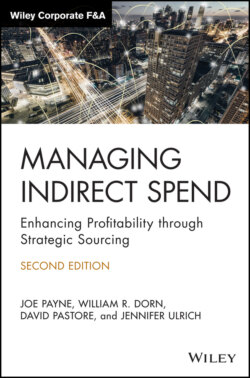Читать книгу Managing Indirect Spend - Joseph Payne, Joe Payne - Страница 75
Important Considerations for Properly Designing an RFI
ОглавлениеWhile the main purpose of an RFI is to fill in the gaps in your independent research, you can also use the process to begin establishing a working rapport with potential suppliers. Important considerations in this regard include the following:
The first interaction with each potential supplier should take place over the phone. Engaging in casual conversations with the supply base opens the lines of communication and suppliers will be pleased to have some personal interactions with a prospective customer. During these phone calls, make suppliers aware of the incoming RFI, then inquire as to the approach they wish to take in responding to this request.
Giving suppliers the option to respond to the RFI in their chosen format allows them to feel most comfortable and, in turn, deliver the best results. A few points should be remembered:Consistency is not needed in the RFI format, just in the questions being asked.When you initially contact a supplier's representative, they may want to jump right into the RFI. Be prepared.Expect the format chosen by suppliers during the RFI process to be similar to the one preferred for the RFP and RFQ processes.Some suppliers may be willing to pay you a visit to present their offerings face‐to‐face and have open dialogues concerning the goals for the initiative.
Ask specific questions in the RFI. In earlier phases, you have already developed an understanding of the spend category you're sourcing. The RFI should expand that understanding, not just legitimize it. Therefore, the questions you ask should be geared toward discovering this new information. Questions that are too general usually only produce information that has already been gathered.
RFI results and independent research are not interchangeable. The purpose of an RFI is to fill in the missing pieces of your initial results.
In some cases, an informal phone conversation may be the best method to get the message across about your organization's needs. The supplier may give some insight into its ability to compete for the business. This could save both of you some time if you determine it is not a good fit. Alternatively, the conversation may help you drive better savings later on if the company suggests that they very badly want to win your business. An effective way to prequalify this situation is to ask suppliers three key questions:
1 What do you need from us in order to succeed in a mutual, long‐lasting engagement?
2 What would be the ideal result of forming a relationship with my organization?
3 How can you help us distinguish ourselves from our competition?
Through asking these questions, you can get a sense of whether or not conversations should continue.
